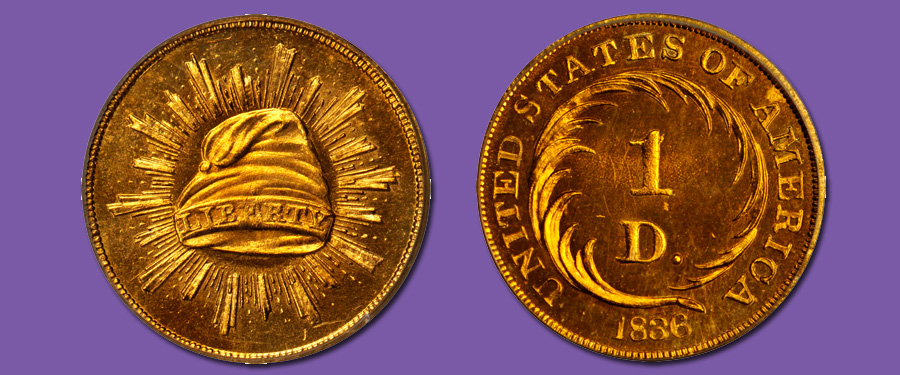
While the U.S. Mint in Philadelphia had been striking gold coins since 1795, these quarter eagle, half eagle, and eagle denominations represented a large sum of money and were mostly used in large business transactions. Many were also sent abroad and melted to take advantage of the favorable silver–to-gold ratio. After four decades of this monetary hemorage, the Coinage Act of 1834, passed by Congress on June 27th and signed by President Andrew Jackson on the following day, raised coinage ratios from the antiquated 15:1 to a more relevant 16:1 silver-to-gold composition, effectively eliminating the advantages of exporting U.S. gold coins.
Coinciding with the Coinage Act of 1834 was the discovery of gold deposits in Georgia and the Carolinas in the 1820s and 1830s, presenting an influx of the precious metal into the economy of the Mid-Atlantic region. This ore was shipped north to Philadelphia to be struck into quarter eagles or half eagles. The Act of March 3, 1835, authorized the erection of branch mints in Charlotte, North Carolina, Dahlonega, Georgia, and New Orleans, Louisiana. While the New Orleans Mint produced both silver and gold denominations in moderation, the facilities at Charlotte and Dahlonega were solely dedicated to processing the locally-sourced aurum.
In the interval before the branch mints were up and running, German metallurgist Christopher Bechtler established a private mint in Rutherford County, North Carolina in order to satisfy the demand for circulating coinage. With his son and his nephew as understudies, Bechtler struck coins in the $1, $2.50 and $5 denominations. These smaller, more practical denominations were widely accepted by the public and circulated liberally throughout the Mid-Atlantic.
Observing the popularity of Bechtler’s privately issued gold dollars, Secretary of the Treasury Levi Woodbury advocated that the U.S. Mint produce a gold $1. Though U.S. Mint Director Robert Patterson objected to this suggestion, Woodbury was able to convince President Jackson that it was a worthwhile venture, and Jackson ordered Patterson to have pattern coins struck for evaluation.
Having already expressed his displeasure with the concept, Patterson had the Mint’s second engraver, Christian Gobrecht, suspend work on his now iconic silver dollar and conceive a design for the proposed gold dollar instead. What Patterson didn’t anticipate was that this “belittling” task handed off to Gobrecht would result in the creation of one of the most attractive pattern coins to come out of the U.S. Mint.
Gobrecht’s design, which is now known as the Judd-67 1836 pattern gold dollar, displays a glorious sunburst surrounding a Phrygian or “Liberty” cap with the word LIBERTY inscribed on the central band across the obverse. The opposite side depicts a coiled palm frond encircling the denomination 1 D. with the legend UNITED STATES OF AMERICA around the border and the date 1836 below.
The MS-66 (PCGS) example we will offer in our official auction of the ANA World’s Fair of Money this August is majestic with vibrant honey-gold patina. The design elements are uniformly bold and nicely lustrous throughout, lacking even the slightest disturbance atop the vulnerable regions. Deeply reflective fields evoke a moderate cameo effect on both sides.
Despite the impressive nature of Gobrecht’s rendering, the U.S. Mint failed to issue a gold dollar of its own until motivated by the outpouring of gold from California in 1849. That 1849 issue wound up depicting James B. Longacre’s Liberty Head design and, while possessing a beauty of its own, it could not truly measure up to the artistic merit expressed on the 1836 Judd-67.
We invite you to examine this jewel, either in person or on our website. This example is sure to delight and satisfy interested collectors.
To view this specimen, along with the rest of our 2015 Chicago ANA World’s Fair of Money Auction, please visit StacksBowers.com or call 800-458-4646 to order your copy of the catalog.





